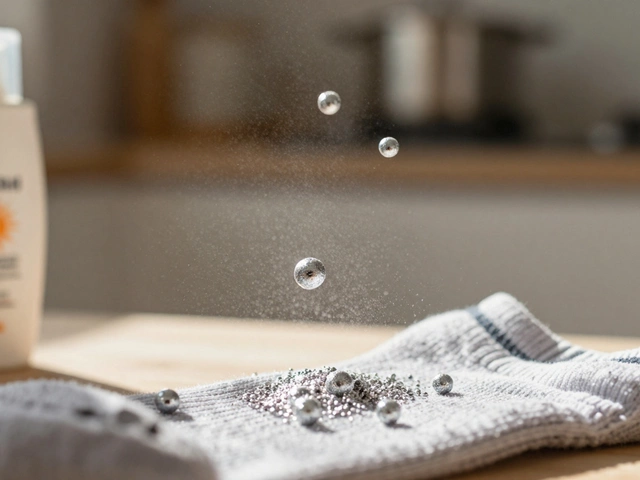Ever notice how stumbling through a bunch of short, choppy sentences makes your mind wander? There's something almost hypnotic about smooth, flowing sentences. Humans actually process information faster when ideas are connected instead of broken up. Poorly combined sentences trip readers up and make writing feel like trudging through mud. There’s a reason novels, newspapers, and even good tweets rely on clever sentence merging. If you want to write clearly, stay organized, or even just sound more interesting, you have to master combining sentences. The right trick can spark curiosity, connect scattered thoughts, or squeeze two ho-hum ideas into one punchy statement. No one wants to sound robotic or repetitive; the art of joining sentences is your shortcut to sounding natural and engaging.
Why Combining Sentences Matters
Let’s get real: sentence length and structure isn’t just grammar class drudgery. The way you link sentences changes what people understand and how they feel about your words. Look at famous speeches or classic novels – the best parts flow because of how sentences hook together. Even science backs this up. One study by the Stanford Graduate School of Education found that clarity in writing, especially with varied sentence structure, boosts reader understanding by up to 40%. That's a serious edge in any field.
If you write emails, blog posts, reports, or even social media captions, you already know how easy it is to get carried away with short sentences. They're simple, sure, but too many in a row come off as abrupt. The flip side, run-ons with too many ideas stuffed inside, lead to confusion. You need the right balance. By combining sentences, you create rhythm, build on ideas, and keep things moving. It’s like music; you need both short and long notes for a tune that sticks. Plus, clever sentence work can actually hide gaps in your knowledge—mix the obvious with the new, and suddenly, you sound a lot smarter.
Another overlooked part: good sentence combining gives your readers a break. They can absorb information without stopping every two seconds. There’s also a trickle-down effect when you combine sentences—the way you join them says a lot about your logic and priorities. Sentence structure helps readers see what’s most important. And here’s a wild fact: companies have analyzed millions of documents and found that the best customer responses come from messages with varied sentences. Not too choppy, not too long—just a smooth ride from start to finish.
The First Way: Using Coordinating Conjunctions
Most people start combining sentences with those classic connecting words: for, and, nor, but, or, yet, so (or, the FANBOYS). These little words might sound basic, but they’re surprisingly powerful. They let you join two sentences that are both important:
- I finished my project. I went for a walk. → I finished my project, and I went for a walk.
- She tried to lift the box. She couldn’t do it. → She tried to lift the box, but she couldn’t do it.
See how the relationship pops? You can connect ideas seamlessly instead of leaving them as separate facts. This technique works wonders in storytelling, explanations, and even arguments. It’s like building a bridge between two points. Try reading each version out loud—another trick from pro writers, since rhythm matters.
Watch out though: don’t join everything with "and" just because you can. Each conjunction brings its own flavor. "But" signals a contrast. "So" shows consequence. Sentence combining gets interesting when you match the right idea to the right connector. It’s all about intention. If you’re explaining, cause and effect works. If you’re telling a story, action and result make it flow.
Want an insider tip? In business writing, editors often use coordinating conjunctions to clarify action steps or policy changes. Legal teams also rely on conjunctions to tighten up contracts—no room for fuzzy language. There’s even a study from Purdue University showing that academic papers with well-placed conjunctions got higher review scores for clarity. A little word goes a long way.
| Conjunction | Purpose | Example |
|---|---|---|
| And | Addition | She writes code, and she designs websites. |
| But | Contrast | He wanted to go, but he was too tired. |
| So | Result | I lost my keys, so I was late. |
So, if you often jump from idea to idea, try combining a few with conjunctions. Your message will come across stronger, and your voice will sound more natural instantly.
The Second Way: Turning One Sentence Into a Dependent Clause
This is where things get a little more advanced—and a lot more interesting. Sometimes, you want one idea to clearly rely on another. That’s when dependent clauses come in, which is just a fancy way of saying you attach one sentence to another with a word like “because,” “while,” “after,” or “although.” The magic here? You can show cause, time, or condition, all in one sentence:
- I missed the bus. I woke up late. → I missed the bus because I woke up late.
- The sun came out. The rain stopped. → After the rain stopped, the sun came out.
- She kept reading. It was late at night. → Although it was late at night, she kept reading.
Unlike just tacking on an “and,” this strategy lets you guide the reader’s attention. They instantly know what’s most important. Dependent clauses are the backbone of persuasive writing—think debates, analyses, or big reports. They keep your argument on track and stop you from sounding flat.
Here’s a helpful trick: to avoid run-ons, make sure every dependent clause has an independent clause to lean on. Test your sentence by splitting it in half; the main idea should still stand on its own. This habit actually builds your grammar confidence fast. Once you’re comfortable, swapping out “because” for a more interesting word like “since” or “when” makes your writing more varied. Little changes pack a big punch.
For job applications or college essays, dependent clauses let you pack in achievements or motivations without rambling. "Since I managed the group project, our results improved," sounds way crisper than two stilted facts. In media, dependent clauses help editors condense long interviews into neat, readable quotes—the kind people actually want to share on social media.
Check out these time-savers:
- "If you submit early, you get extra credit." (Instant cause and effect)
- "Before you decide, think it through." (Clear order of actions)
Using this method, you can slip extra detail or context into any sentence. Teachers, journalists, even screenwriters rely on dependent clauses to keep things readable and compelling. Next time you catch yourself rattling off short sentences, try merging them with a reason, a time, or a condition.

The Third Way: Using Appositives and Phrases
Sometimes you’ve got two sentences—one is kind of just explaining or rephrasing the other. Instead of separating them, you can combine them using an appositive (that’s when you throw in a describing phrase). Here’s how it looks in action:
- Maria won the contest. She is my best friend. → Maria, my best friend, won the contest.
- He loves music. He’s a skilled guitarist. → He loves music, a skilled guitarist who practices every day.
Appositives let you tuck information snugly into the main sentence. They work wonders for quick clarifications, subtle bragging, or mentioning credentials. This trick transforms two boring facts into one smooth description. Notice the difference in the examples? The second versions sound more natural, like how you’d explain things in a conversation.
When you use appositives or descriptive phrases, your writing gets more vivid without getting longer. They’re like adding details to a sketch instead of drawing a whole new picture. Professional writers use this in profiles, bios, and story intros. Even news reports rely on appositives to introduce people fast: “Taylor Swift, an international pop star, released a new album.” The appositive introduces, adds flavor, and then lets the main point shine.
Want your writing to sound smarter with zero effort? Plug an appositive into your next sentence. A study by The Writing Center at UNC-Chapel Hill found that students who tried this method got higher marks for variety and clarity. Appositives can use commas, dashes, or even parentheses—just make sure your sentence is still clear if you lift out the phrase.
Here are a few tips for nailing this technique:
- Keep appositives short and relevant; don’t wander off topic.
- If the extra phrase isn’t critical, set it off with commas or dashes.
- Read the sentence out loud. If it feels cluttered, trim the description.
This might feel strange at first, but you’ll be surprised how often you spot a place to slide in an extra detail or clarify a name using this trick. Writers for big brands, authors, and bloggers all use appositives to condense info and keep the reader hooked.
Tips, Pitfalls, and Real-World Examples
Getting good at combining sentences is like learning to ride a bike without wobbling all over the place. Mistakes are normal, but you get smoother the more you spot the hidden connections between ideas. Here’s where people usually trip up:
- Jamming too many ideas into one sentence, so it gets confusing or turns into a run-on.
- Always picking "and" when another connector would work better—variety keeps readers interested.
- Forgetting that clarity matters more than length. Sometimes, short sentences are necessary for emphasis.
- Using commas between sentences that should have a conjunction or be separated—a classic comma splice.
You’ll spot this in the wild: politicians cram too much in, marketing blurbs leave out connectors, students overcomplicate things with endless clauses. Finding a middle ground is smarter. Here’s one way to practice—take a paragraph from your favorite book and try breaking it into single sentences, then rebuild it only using the three methods above. The result? You’ll hear the rhythm behind the writing that makes it work.
Check this table of common sentence mistakes versus improved combinations:
| Original | Improved |
|---|---|
| Jane likes to swim. She likes to run. | Jane likes to swim and run. |
| Liam moved to Paris. He wanted to learn French. | Liam moved to Paris because he wanted to learn French. |
| Sarah adopted a dog. The dog is very playful. | Sarah adopted a dog, a very playful one. |
Another smart way to test your sentence combining is to ask a friend to read your work out loud. You'll hear right away where it gets awkward or repetitive. Combine sentences for smoothness, but always keep the goal in mind: clear, natural communication. Teachers, editors, recruiters, and readers all pick up vibes from your sentence style—make sure it sends the right one.
Practical Exercises to Master Sentence Combinations
If you really want these techniques to stick, you have to practice. Print out a few paragraphs from any blog, news story, or even your own emails. Pick three short, related sentences. Try each of the methods you’ve learned: one with a coordinating conjunction, one with a dependent clause, and one with an appositive or phrase.
- Gather three sets of short sentences. Example: "He forgot his umbrella. It was raining. He got soaked." Practice combining them in different ways.
- Rewrite them: "He forgot his umbrella and got soaked because it was raining." Or, "He got soaked, having forgotten his umbrella when it was raining." Notice how the meaning can change slightly depending on your phrasing.
- Mix in more info. Make sure your sentences are still clear. If something sounds odd, try breaking it up and starting again.
Try a "before and after" approach: write a short paragraph using only simple sentences. Then, revise it by using the three methods above. Read both versions—your ear will pick up the difference in flow.
Look at how some of the world’s best writers do this. J.K. Rowling moved readers with dialogue that mixed short and long sentences for mood. Journalists at The New York Times use dependent clauses to build suspense in breaking news. Copywriters on viral ads use coordinating conjunctions to mash up benefits without sounding stiff. They're not using magic—just these simple sentence tricks.
Your challenge: spot a sentence in your next piece of writing that feels flat. Combine it with the next idea using these tips. You’ll notice your writing comes alive. People will keep reading, your points will land harder, and best of all—your words will sound just like you meant them to.





